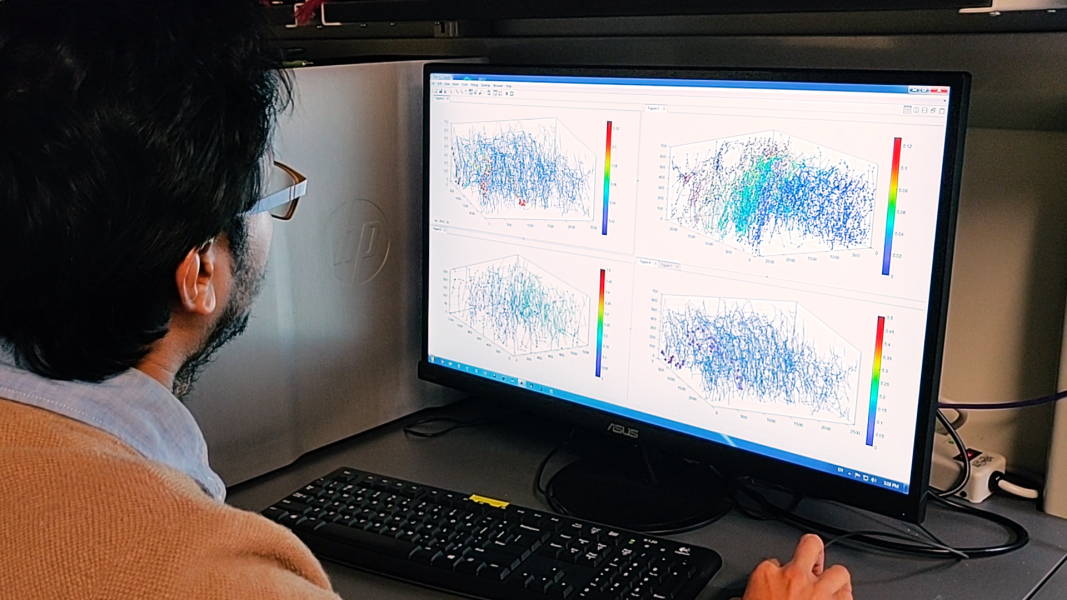Methods to image and quantify complex nanoscale networks in three dimensions (3D) are essential for understanding and modeling their functional properties. For example, novel nanoscale experimental approaches are needed to determine how the 3D topology of carbon nanotube (CNT) networks leads to the observed electrical conductivity.
In Advanced Functional Materials, Dr. Heiner Friedrich from Eindhoven University of Technology and co-workers demonstrate a unified experimental view of nanoscale packing, connectivity, and conductivity of carbon nanotube (CNT) networks using quantitative electron tomography.
Dr. Karthikeyan Gnanasekaran, an author on the study, states the importance of this work:
“Several studies have contributed to the understanding of percolation and conductance in 3D CNT networks that is governed by length, diameter, aspect ratio, tortuosity, and nanoscale attractive and repulsive interactions. Yet, a direct link between the actual topology of these networks that lead to the observed electrical properties has not been established, mainly due to a lack in nanoscale experimental approaches.
For the first time here, we show how these nanoscale networks can be analyzed and quantified for their connectivity, conductivity, and contact properties in three dimensions using a model-based image analysis to understand and model their functional properties in a bottom-up fashion.”
Quantitative electron tomography (QET) can be used to provide insight into packing phenomena and may lead to the design of materials with improved functional properties.
To find out about quantitatively imaging CNTs in 3D to assess density and distribution, please visit the Advanced Functional Materials homepage.

















